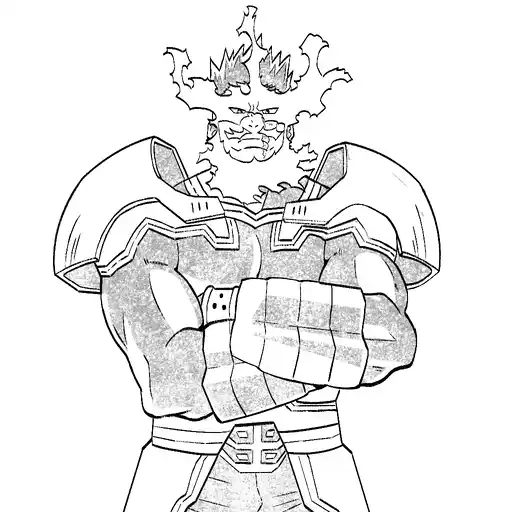Introduction
In the vibrant world of manga, few series have captured the hearts of readers quite like Akaza Samamiya’s Mr. Mallow Blue. As announced in the November issue of Kadokawa’s Asuka magazine, this beloved series is set to continue its legacy with a side story titled Mr. Mallow Blue: After The Rain, scheduled for release in the magazine’s March issue. This announcement coincides with the publication of the final chapter of the main story and the upcoming release of the sixth and final compiled book volume on December 24th.
Mr. Mallow Blue has become renowned for its intricate exploration of human emotions and societal themes, focusing on the intersecting lives of various social outcasts. Through its engaging narrative and beautifully illustrated panels, the series has expertly woven together the stories of a fragile girl, a shut-in, and a handsome man who conceals his true self behind a cold exterior. This article delves into the rich tapestry of Mr. Mallow Blue, examining its cultural impact, the creative genius behind it, and what the future holds for this captivating universe.
Background and Context
The Rise of Akaza Samamiya
Akaza Samamiya has established herself as a formidable force in the manga industry, known for her unique storytelling and compelling character development. Her journey began with the serialization of Bloody Mary in Monthly Asuka from November 2013 to February 2017, a series that explored themes of identity and acceptance through a supernatural lens. Bloody Mary‘s success, both in Japan and internationally, laid the foundation for Samamiya’s subsequent works.
Following Bloody Mary, Samamiya launched Ballad x Opera in May 2017, a series that further showcased her ability to blend fantasy with emotional depth. Concluding in September 2019, Ballad x Opera left a lasting impression on its audience, solidifying Samamiya’s reputation as a master storyteller. It is within this context that Mr. Mallow Blue emerged, captivating readers with its introspective narrative and relatable characters.
The Emergence of Mr. Mallow Blue
Mr. Mallow Blue debuted in November 2019 in Monthly Asuka, quickly gaining a dedicated following. The series’ focus on social outcasts resonated with readers, offering a window into the lives of those often overlooked by society. Through its characters, Mr. Mallow Blue explores themes of loneliness, acceptance, and the masks people wear to navigate the world.
The series’ popularity can be attributed to its nuanced portrayal of human emotions and the universal struggles of identity and belonging. By highlighting the intricacies of its characters’ lives, Samamiya invites readers to reflect on their own experiences and the connections they forge with others.
Main Insights
Exploring Themes of Identity and Belonging
Central to Mr. Mallow Blue is its exploration of identity and belonging. The series delves into the complexities of self-perception and the societal pressures that shape it. Through the stories of its protagonists, Samamiya examines the masks people wear to protect themselves from judgment and rejection.
For instance, the character of the handsome man who wears a cold expression as a mask reflects the struggle of maintaining a façade to meet societal expectations. His journey towards self-acceptance and vulnerability serves as a poignant reminder of the importance of authenticity and the courage it takes to reveal one’s true self.
The Role of Social Outcasts in Literature
Mr. Mallow Blue shines a light on the lives of social outcasts, individuals who often exist on the fringes of society. By centering its narrative on characters who feel disconnected from the world around them, the series challenges readers to consider the impact of isolation and the power of human connection.
Through its portrayal of a fragile girl and a shut-in, the manga addresses issues of mental health, loneliness, and the search for acceptance. These themes resonate with readers who may have experienced similar feelings of alienation, fostering a sense of empathy and understanding.
The Art of Storytelling in Manga
Samamiya’s storytelling prowess is evident in her ability to weave complex narratives that engage and captivate readers. Her use of visual storytelling, combined with poignant dialogue, creates an immersive experience that draws readers into the world of Mr. Mallow Blue.
The series’ art style, characterized by its delicate linework and emotive expressions, enhances the emotional depth of the story. Samamiya’s attention to detail and her skillful use of visual metaphors add layers of meaning to the narrative, inviting readers to explore the subtleties of the characters’ journeys.
Culturally Relevant Perspectives
Mr. Mallow Blue offers a culturally relevant perspective on contemporary societal issues. By addressing themes of identity, belonging, and mental health, the series reflects the challenges faced by many individuals in modern society. Samamiya’s ability to capture these themes with sensitivity and nuance has contributed to the series’ widespread acclaim and resonance with a diverse audience.
Challenges and Opportunities
Overcoming Misconceptions and Stigmas
One of the challenges Mr. Mallow Blue addresses is the stigma associated with social outcasts and mental health. The series offers an opportunity to challenge these misconceptions by presenting its characters with empathy and complexity. By humanizing the experiences of its protagonists, the manga encourages readers to reconsider their perceptions and foster greater understanding.
Expanding the Reach of Manga
The success of Mr. Mallow Blue highlights the potential for manga to reach a global audience. As interest in Japanese culture and media continues to grow, there is an opportunity to introduce diverse narratives to new readers. By expanding the accessibility of manga through translations and digital platforms, series like Mr. Mallow Blue can continue to resonate with international audiences.
Future Outlook
The Impact of Mr. Mallow Blue: After The Rain
The upcoming side story Mr. Mallow Blue: After The Rain presents an exciting opportunity to further explore the themes and characters of the original series. As the manga industry evolves, there is potential for new storytelling techniques and formats to enhance the reader experience. This side story may offer fresh perspectives and deepen readers’ understanding of the Mr. Mallow Blue universe.
The Influence of Manga on Global Culture
Manga’s influence on global culture continues to expand, with series like Mr. Mallow Blue playing a pivotal role in shaping perceptions and sparking conversations. As manga becomes increasingly integrated into mainstream media, its impact on storytelling, art, and cultural exchange is likely to grow. The future of manga holds exciting possibilities for innovation and cross-cultural collaboration.
Conclusion
Mr. Mallow Blue stands as a testament to the power of storytelling in addressing complex societal themes. Through its exploration of identity, belonging, and the human experience, the series has captured the hearts of readers worldwide. As Akaza Samamiya continues to expand the Mr. Mallow Blue universe with After The Rain, readers can look forward to new insights and adventures.
The series’ success underscores the potential for manga to foster empathy, challenge perceptions, and inspire meaningful connections. As we reflect on the journey of Mr. Mallow Blue, we are reminded of the importance of embracing authenticity and the impact of stories that resonate across cultures.





